What Hi-Fi? Verdict
Set your expectations to the price and Sky Glass is a solid performer – but it's still not for everyone
Pros
- +
Sky without the dish
- +
Decent picture for the money
- +
Sounds much better than most TVs
Cons
- -
Weak motion-handling
- -
Washed-out bright images
- -
No true recording
Why you can trust What Hi-Fi?
By now, you surely must have heard of Sky Glass, such is the might of the Sky marketing machine. Even the Sky Sports football commentators have to mention it as part of their spiel.
You could be forgiven, though, for still not really knowing what it is – and that's because it's really two things at once. Primarily, it's a new Sky TV platform that's delivered entirely over the internet and therefore free of a satellite dish. But it's also, for the time being at least, a TV, as the only way to get the Sky Glass service is to buy a Sky Glass TV that has it built in.
For some, that's a big stumbling block; for others, it's paradise. No extra boxes or extra remotes – just a neat TV with one zapper, no dangling cables and no need for a dish. You shouldn't need a soundbar either, as a Dolby Atmos speaker system is also integrated into the TV's chassis. On top of that, Sky insists that the Sky Glass TV delivers its content as it should be seen.
The question, of course, is whether the Sky Glass TV delivers on its lofty promises. First, though, does it really cost just £13 per month?
Price
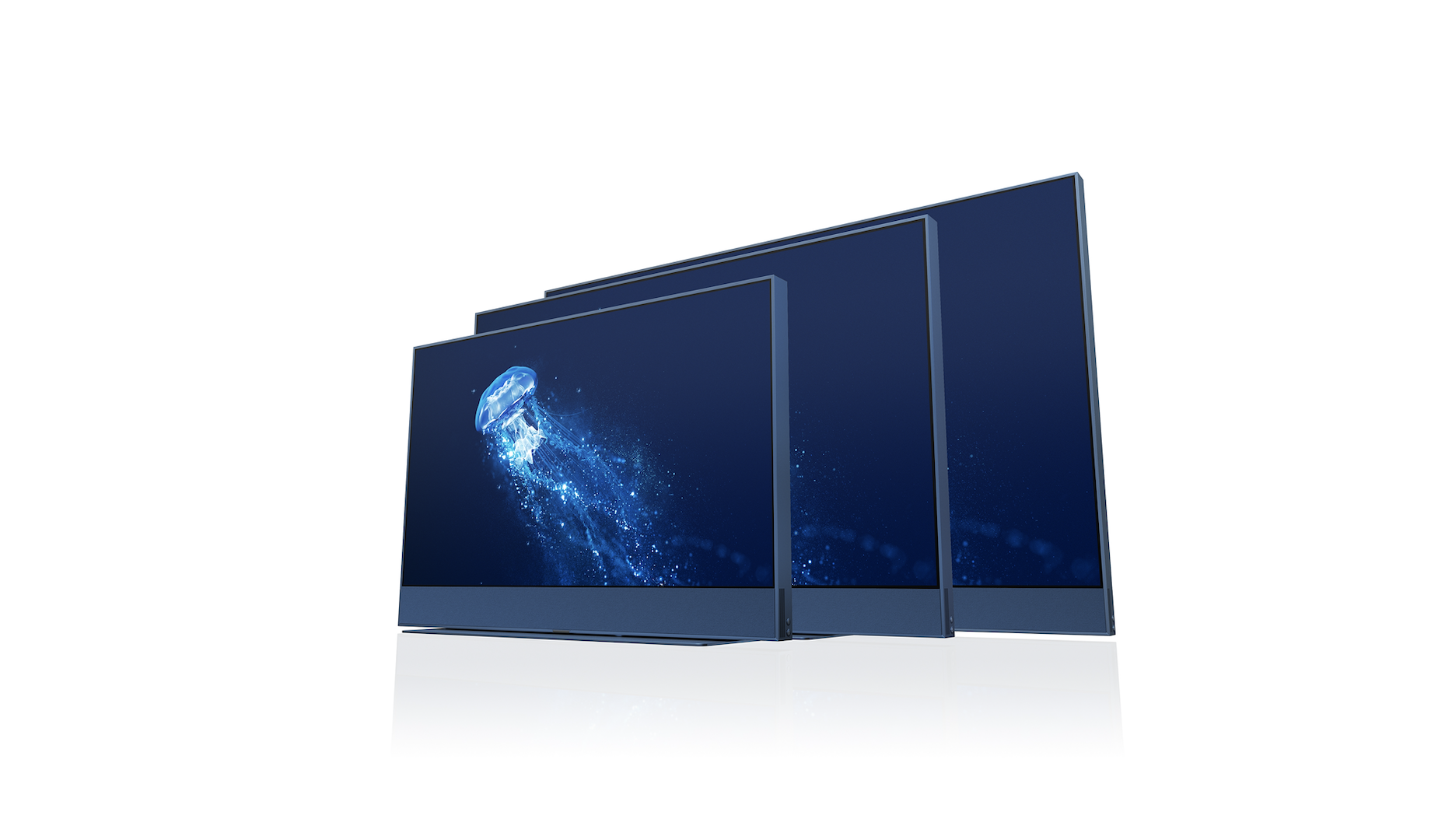
The Sky Glass TV is available in three different sizes – Small, Medium and Large.
Small is a 43-inch set that costs £649 if paid for upfront. The Medium, 55-inch model is £849. Large measures 65 inches and will set you back £1049.
But Sky Glass can be paid for monthly, and here's where things get interesting.
The eye-popping £13 per month figure is for the Small Sky Glass model, paid for over 48 months. Maths whizzkids might have noticed that £13 times 48 doesn't equal £649. There is a £10 upfront payment but, even then, the total price paid is actually £634. That's not a mistake: it's actually cheaper in the long run to pay monthly for the TV than to pay for it in one go.
If a four-year contract feels like too much of a commitment, you can instead opt to pay for your Sky Glass TV over two years, at a rate of £26 per month, with a £20 upfront payment. That will take the total price paid to £644.
The Medium and Large versions of Sky Glass can be bought over the same terms. So the Medium is £17 over 48 months (plus £10 upfront) or £34 over 24 months (plus £20 upfront), while the Large is £21 over 48 months (again, plus £10 upfront) or £42 over 24 months (£20 upfront).
Here's the breakdown of Sky Glass packages in a more digestible format:
| Size | Upfront cost | 48-month contract | 24-month contract |
|---|---|---|---|
| Small (43 inches) | £649 | £13 per month (+£10 upfront) | £26 per month (+£20 upfront) |
| Medium (55 inches) | £849 | £17 per month (+£10 upfront) | £34 per month (+£20 upfront) |
| Large (65 inches) | £1049 | £21 per month (+£10 upfront) | £42 per month (+£20 upfront) |
But that's not the whole story, inevitably. Because those payments cover only the cost of the TV itself and not the Sky subscription. You also need to subscribe to at least Sky Ultimate, which will set you back £26 per month. So that means the cheapest Sky Glass is really £39 per month, rather than the £13 per month headline figure.
And we're not done yet. While the TV supports HDR and Dolby Atmos, you need to pay an extra £5 per month to add them to your Sky subscription. That these aren't part of the core Sky Glass service seems ridiculous.
And while Sky Ultimate includes Sky TV channels such as Sky Atlantic and Sky Max, it doesn't include Sports or Cinema, which will cost you an extra £25 and £11 respectively, should you want them. Sky Kids is £5 extra as well.
If you want to have Sky Glass in more than one room, you need to pay an extra £10 per month. This extra tenner will give you a 'Whole Home' subscription, but each room will require a Sky Stream Puck in order to add Sky Glass to a standard TV. The first Puck is currently free, but extras will set you back £50 each. You can of course go for multiple Sky Glass TVs instead of going down the Puck route, if you so wish.
And good news for those looking for the Sky Glass experience but don't want the TV – you can now buy the Sky Stream Puck as a standalone device.
One of Sky Glass's key selling points is its amalgamation of content from lots of other streaming services, such as Netflix, Amazon Prime Video and Disney+, but (with the exception of Netflix, which is included in its most basic standard-def form with the Sky Ultimate package) you have to pay separately for those subscriptions, just as you do with any other TV.
In short, while the £13 per month will draw plenty of people in, that's nothing like what someone will actually pay for it. As tested (we've got the 55-inch 'M' TV with the full Sky package), Sky Glass actually costs £10 up front and £89 per month (before adding extra streaming services), assuming a 48-month contract on the TV.
You may well be wondering what happens if you've got the Sky Glass TV but decide to cancel the Sky TV service, which is something you can do. Somewhat surprisingly, the TV does have an aerial socket and can receive Freeview channels, and those will be available, along with any separate streaming services you've subscribed to and any external sources that are connected to the HDMI sockets, if you cancel your Sky subscription.
Design
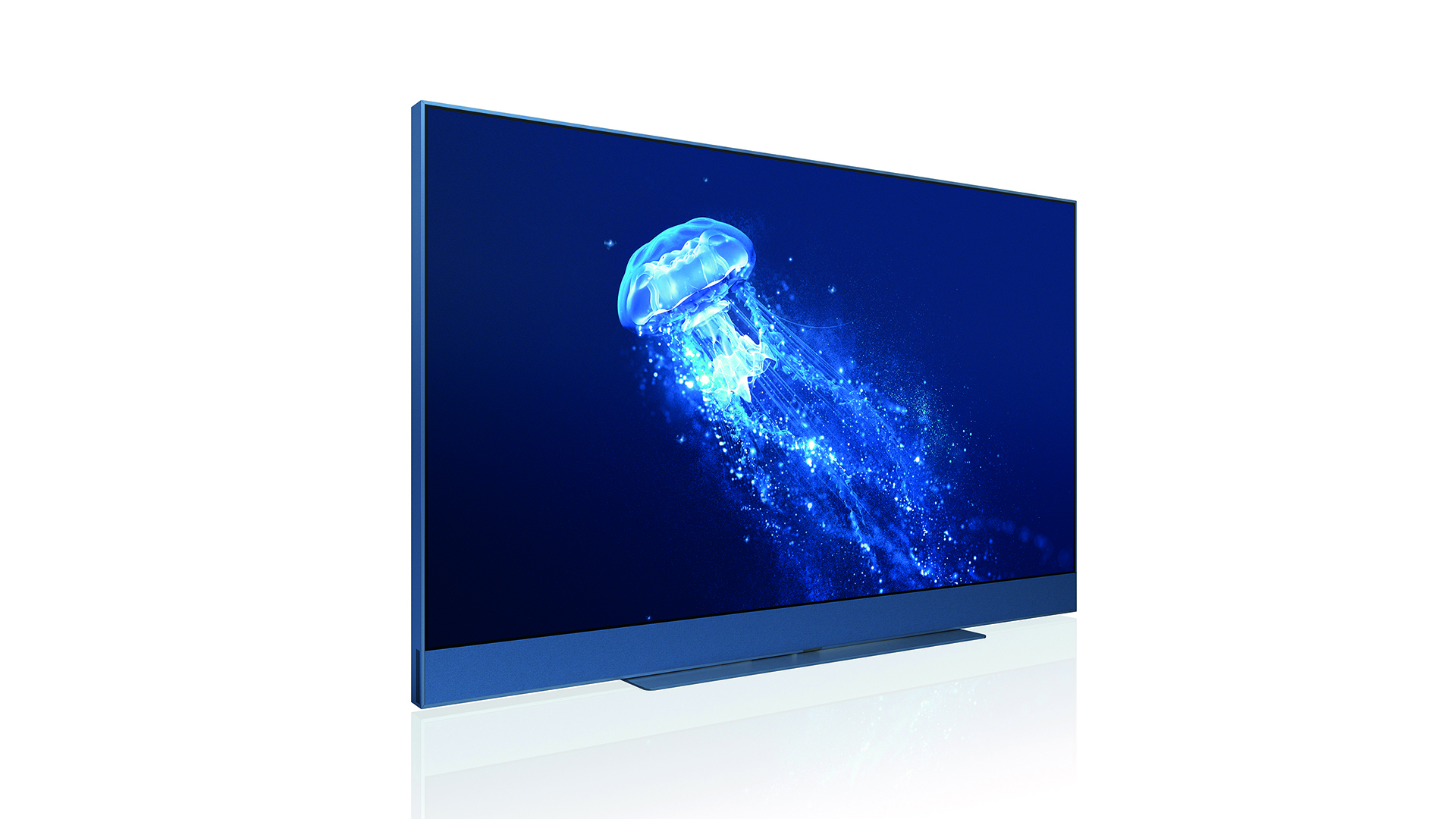
As an object, the Sky Glass TV is really nice. Rather than go for a dramatically thin design, Sky has opted for a chunkier, more angular and more stylishly industrial chassis. The set was always going to be quite thick, thanks to its combination of direct-backlit LCD screen and six-speaker Dolby Atmos sound system (more on both below), but Sky has sensibly chosen to embrace that, producing a TV that has the look of a smart picture frame.
Wall mounting will obviously further enhance the picture frame appearance, and the Sky Glass TV actually has an integrated mounting solution that holds the TV almost flush to the wall. Those placing the TV on furniture will appreciate the low-profile pedestal stand, with its relatively compact footprint. It's only a shame that the hidden 'neck' of the stand doesn't allow for the set to swivel, which is what the design suggests.
The chassis is constructed using anodised aluminium and is available in five different colours – white, black, green, blue or pink. The woven acoustic mesh that covers the speakers beneath the screen can be colour matched to the metal frame or can be bought in a contrasting colour. Patterns featuring all sorts of vibrant colours are also available, although curiously they cannot be purchased through Sky and instead must be ordered via Amazon.
Features
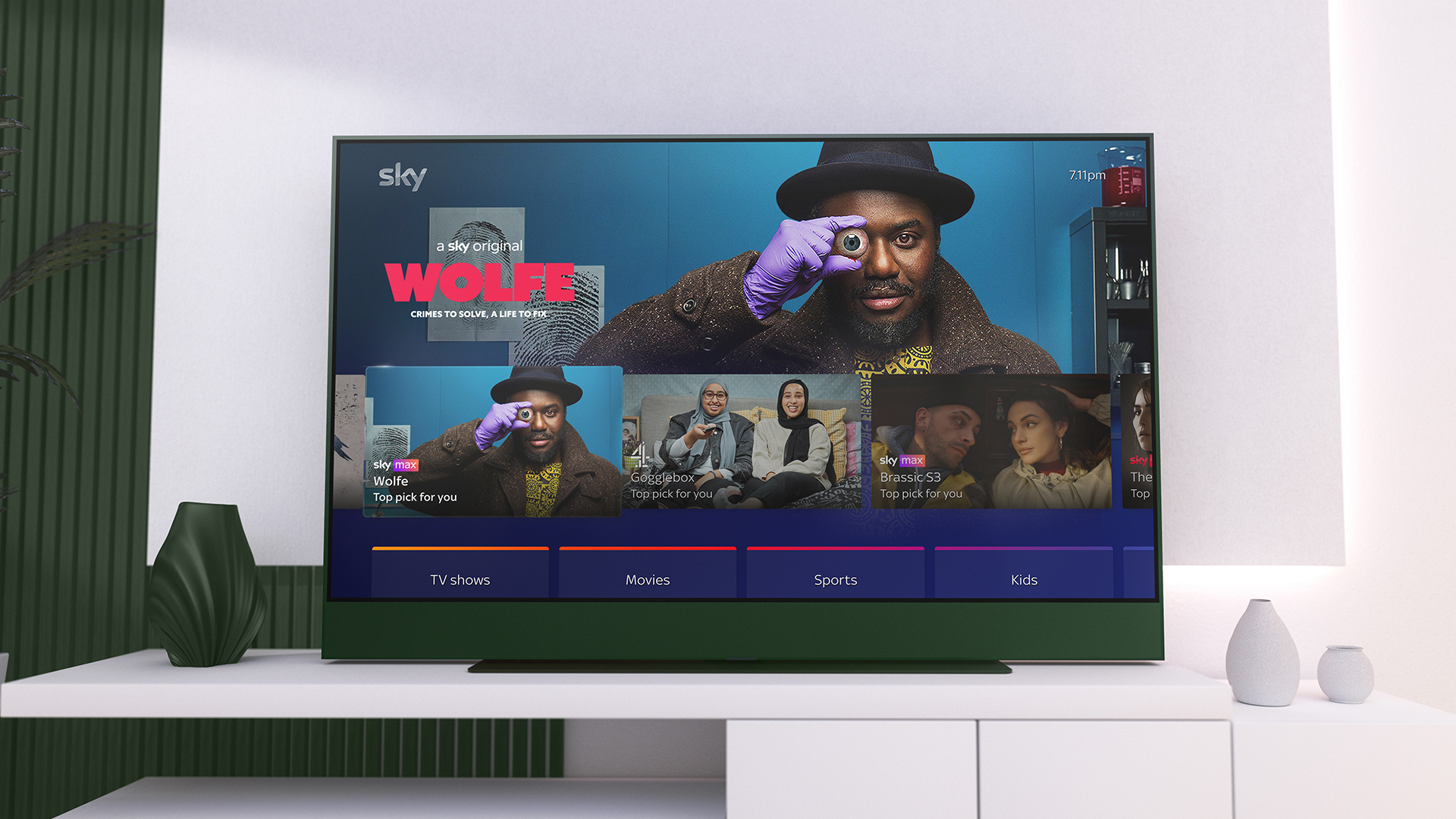
The panel of the Sky Glass TV is supplied by TPV, one of the world's largest panel makers. It combines the quantum dot technology made famous by Samsung's QLED TVs with a direct LED backlight. Perhaps unsurprisingly, Sky won't be drawn on specifics such as the number of dimming zones Sky Glass has, or its peak brightness figures.
We can confirm, though, that the TV has a 60Hz refresh rate, so it won't handle 4K@120Hz gaming, even though the three HDMI ports are apparently HDMI 2.1-certified. What's more, all of the other next-gen gaming features of note – VRR (Variable Refresh Rate), ALLM (Auto Low Latency Mode) and HGiG – are also missing. In fact, the Sky Glass TV doesn't even have a dedicated, lag-reducing game mode, which is something every other TV we've tested over the last few years has had. Even so, while input lag certainly isn't super-low, it's not terribly high either, and the casual gamer should notice no lack of responsiveness. Hardcore gamers, on the other hand, likely stopped reading at the start of this paragraph.
Somewhat interestingly, despite the fact that the TV's integrated speaker system is clearly designed to make an external sound system unnecessary, one of the HDMI sockets does support eARC (Enhanced Audio Return Channel) for the easy, high-quality connection of a soundbar or AV receiver.
That integrated sound system consists of six speakers – a forward-firing centre speaker, a forward-firing subwoofer, two side-firing speakers mounted towards the bottom of either edge, and two upward-firing speakers at the extremities of the top edge. Dolby Atmos support is baked-in. Missing, however, is support for headphones – there's no physical headphone socket or support for Bluetooth headphones –which seems a very odd oversight.
On the subject of Dolby, Sky Glass also supports Dolby Vision, as well as HDR10 and HLG. HDR10+ is missing, but we can't imagine many people will shed a tear over that news.
In the past few years, Sky Q has become a hub for other streaming apps and their content, and Sky Glass takes the same approach. On board are, among others, Netflix, Amazon Prime Video, Disney+, Apple TV+, BBC iPlayer, ITV Hub, All 4, Spotify and BBC Sounds.
That's a very solid selection, of course, but there is some inconsistency in format support across the apps. Netflix and Amazon Prime Video are presented in Dolby Vision and Dolby Atmos (where the content allows) just as they should, but Disney+ and Apple TV+ inexplicably top out at HDR10 and 5.1 sound.
One of the Sky Glass TV's more controversial features is one that sees the TV turn on automatically when you enter the room, displaying fullscreen posters for recommended shows and movies. This is not a feature to which we're particularly drawn – a living room is used for far more than only TV-watching, so the fact that the Sky Glass TV immediately demands your attention as you walk in seems rather unpleasant. Sky says that in the future this feature could be used for displaying artwork, photos and more, in the vein of Samsung's Ambient Mode, and perhaps we'll appreciate it more then. In the meantime the feature can at least be switched off.
As well as a motion sensor, there are also two far-field microphones built into the Sky Glass TV's chassis. These allow for full hands-free operation of the TV. It will turn on to the 'hello Sky' wake phrase, and you can then perform all sorts of functions via voice, including pausing and rewinding content, searching for specific shows and movies, changing the volume and finding all of the matches involving your favourite football team. If you don't like the idea of the TV always listening to you, you can switch the chassis-integrated microphones off and then simply use the button-operated one that's built into the remote control.
Whichever microphone/s you choose to use, the voice control is decent but not flawless – the set understands instructions roughly nine times out of ten, but those occasional commands that need to be repeated are predictably frustrating. Perhaps it's an age thing, but we ultimately find ourselves only occasionally using voice commands to find a specific show or movie, and rely on the remote's buttons for everyday operation. It's a very nice remote, too, with a pleasant soft-touch finish, satisfyingly clicky buttons and good ergonomics. It combines with the responsive menu system to make navigation feel snappy and intuitive.
Setup
Setup and user experience
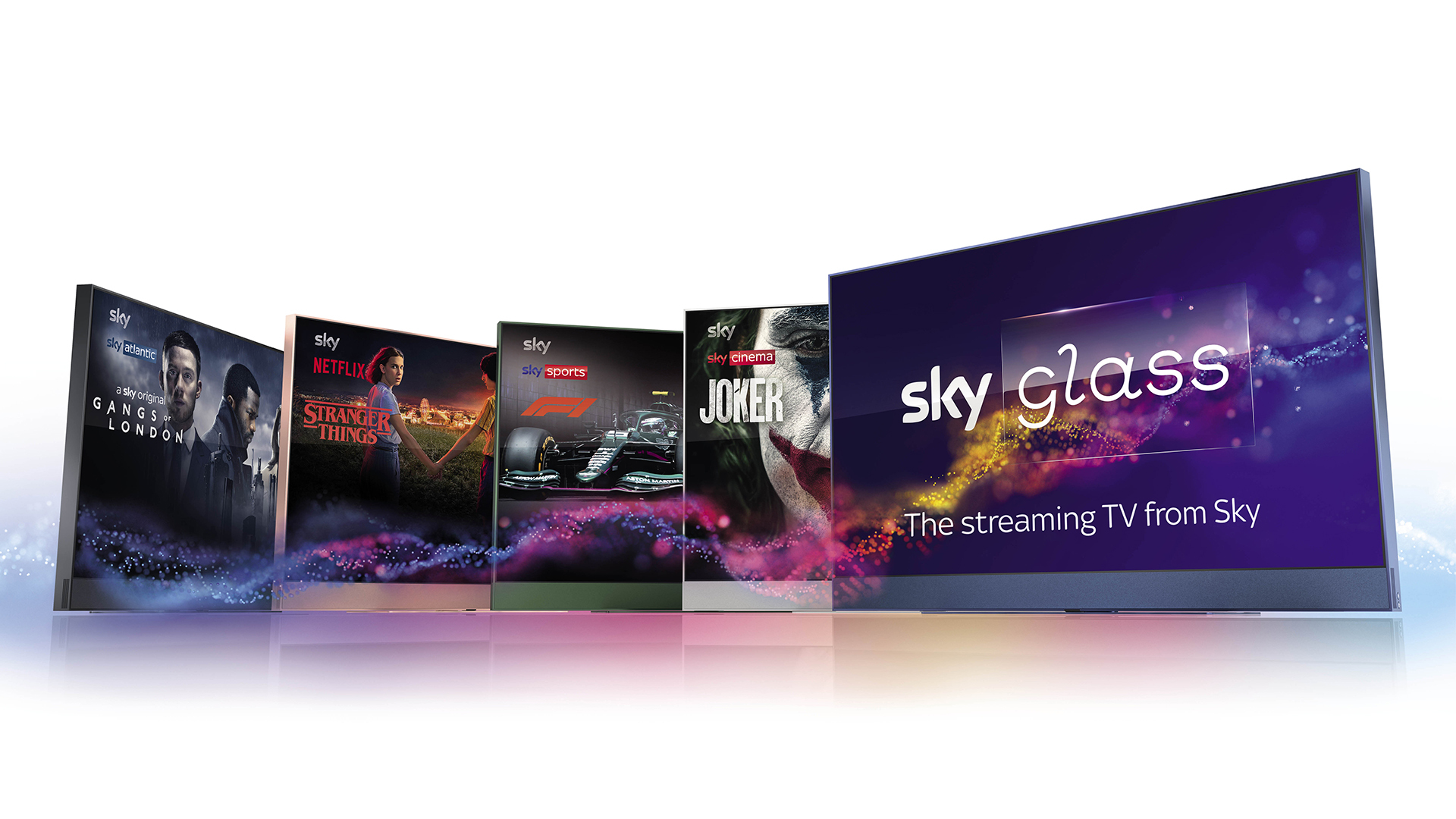
Sky wants the set up of Sky Glass to be as stress-free as possible, so your set isn't simply delivered – it's unpackaged, put together, put in position and plugged in. You can sit back and relax, and in no time at all you'll be good to go. The driver will even take the box away unless you ask them not to.
And when you do get going, you'll notice that the user-experience is very much like that of Sky Q, but slicker and more stylish. Recommendations are still placed front and centre on the Home screen, and these are selected based on a number of factors, including general popularity, your viewing history and time of day. Truth be told, during our time with the set it's primarily felt as if Sky is really just pushing its big new shows here, but it's more than possible that the recommendations will improve once Sky Glass has been lived with for longer.
As you scroll down, you're presented with more 'rails' for things such as 'Now and Next' (live TV broadcasts), 'Continue Watching', 'TV Shows', 'Movies' and 'Sports', and each of these has at least a degree of personalisation to it. You can of course get to a traditional EPG (TV Guide) as well. This might technically be a streamer, but the live TV experience is still there if you want it.
As with Sky Q, the recommendations thrown your way come not just from Sky itself, but also any and all of the apps you've got installed, be they Netflix, Amazon Prime Video, Disney+, BBC iPlayer etc. The idea is that the provider of the content is irrelevant – you're simply presented with something to watch and you can click on it to get cracking. That said, in most cases the app providing the content is opened up before you get playing – it's not simply served up as if it's Sky's own programming. Even so, the thoroughness of this content aggregation and the fairly unbiased way in which it is presented is impressive.
One new feature of particular interest is 'Playlist'. If you find something you are interested in, press the '+' button on the remote and it will be added to a dedicated Playlist section for viewing at your leisure. If it's a TV series, every episode will be gathered in one place – even if some are hosted on one service and the rest on another. It's a neat feature but, let's face it, one that should already be on Sky Q.
While Playlist is largely very good, giving you a dedicated area for everything you are watching and have marked to watch, it is worth bearing in mind that it's not the same as recording content. In many ways, it's better – the aforementioned gathering of episodes from various services for example – but it's not entirely without issues. The biggest one is that continued access to something in your Playlist depends upon its continued availability on the service hosting it. For example, if you put a BBC program into your Playlist but it is then removed from the iPlayer a month down the line (a common occurrence), you will no longer be able to watch it. On Sky Q, shows are recorded or downloaded to a built-in hard drive, where they will essentially stay forever if you don't manually delete them.
Picture quality

By default, the Sky Glass TV will be set in an Auto picture mode, designed to select the correct picture settings automatically for the content being watched. This is by no means the first TV to offer such a feature, but Sky's proposition is particularly compelling because the company is responsible for creating such a wide array of content.
The argument is that TV shows and movies are produced to different standards to sports, and that Sky is uniquely positioned to offer the best and most accurate settings for each. The company refers to this as a glass-to-glass approach – from the glass of the camera lens to the glass of the TV screen.
That's all well and good in theory, but the reality is far less intelligent. Essentially, the TV has three picture presets – Entertainment, Sport and Movie. Entertainment and Movie are for all intents and purposes identical, and significantly differ to Sport only in colour temperature: Entertainment and Movie have a typically cinematic warmth to them, while Sport is cooler and purer in its whites.
In short, you can boil it down to the TV having two picture modes – warm and cool – and leaving it on the Auto setting simply applies the most appropriate of these to the content being watched. How much intelligence does it employ in making the decision of which mode to use? Almost none, it seems: any live TV on the dedicated sports channels gets the cool setting, and everything else is warm. Even Sky Sports' own on-demand content, including football matches in your Playlist, have the apparently incorrect warm filter applied to them. That's zero points for effort.
That said, the only real frustration here is Sky's false promises, because the presets themselves are well judged, with the only picture setting that needs tweaking being the Auto Backlight Adjustment, which is on by default and which hobbles the set's peak brightness. You should absolutely turn this off, but most people will see no need to touch any of the other settings. Those who are desperate to tweak further can delve into the dedicated Custom Settings menu, which makes changes to a separate Custom preset, but we don't feel the need. Our recommendation is to leave the set in Auto if you occasionally want the extra bite in sports content, or use Movie for everything if you would prefer consistency across everything you watch.
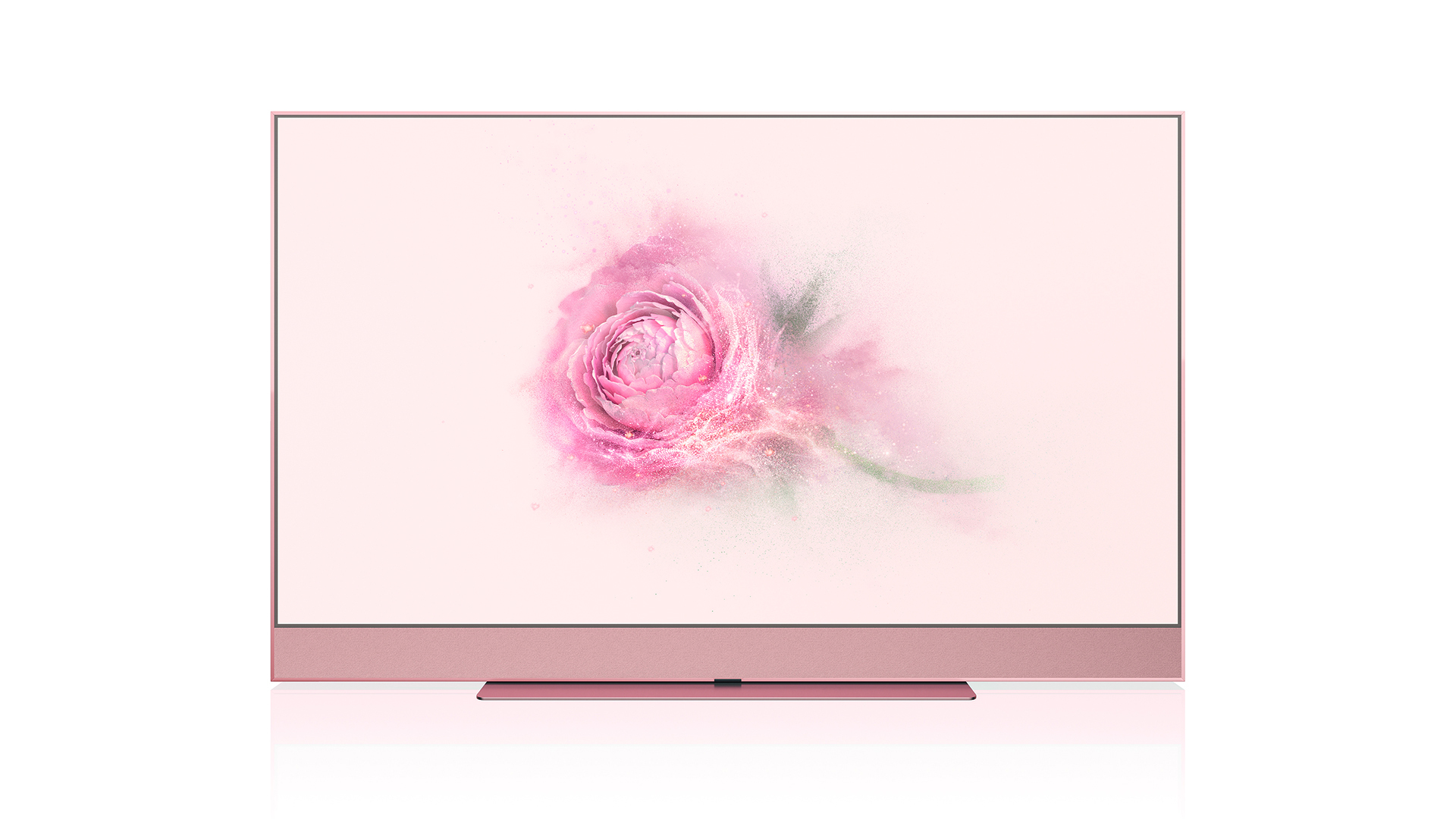
So, how is the picture performance? In short, it's good, as long as you have got your expectations in check. Pay too much heed to Sky's promotional material and you might start thinking that Sky Glass offers a flagship TV performance – the kind that you would expect from an OLED or top Samsung QLED. But that's marketing for you, and expectations really ought to be calibrated to the price.
Let's remember that you are essentially getting a TV and a Dolby Atmos soundbar in one package that, in the case of our 'Medium' review sample, costs just £849. Consider that the cheapest Dolby Atmos soundbar we recommend (the four-star Majority Sierra Plus) is £270 and you are leaving just £579 for the TV. That's not a lot of money for a 55-inch TV of any kind, and a long way short of OLED money.
These are rough figures, of course, and we're not saying that the Sky Glass sound system is necessarily 'worth' £270; but they broadly represent the costs that would be involved in buying a TV and Dolby Atmos soundbar separately, and they help to set expectations.
With that in mind, we fire up Lost in Space in Dolby Vision from Netflix and are broadly impressed by the picture provided. Dark scenes are surprisingly good: blacks obviously don't have the inky depth of those from a flagship TV, but they're deep by budget LCD TV standards and there's plenty of detail contained within. The scenes in deep space prove that Sky Glass doesn't have great contrast, as the stars lack the bright sparkle one might hope for, but they are free from the blooming that is common at this end of the market. In fact, the backlight is very consistent overall, and viewing angles are decent, too. A little vibrancy is lost as you move off axis, but it's far from a dramatic drop off, and by and large everyone in the room will get the same viewing experience.
As the action moves to daylight on the planet, the Sky Glass TV looks a little washed-out and lacking in the vibrancy that some similarly affordable TVs can muster, proving that it struggles somewhat to combine bright and dark picture elements. It is also a little softer than is standard, too, and, combined with the limited contrast, that makes for an image that's slightly flat. That said, those sharper and more vibrant TVs at the budget end of the spectrum often look exaggerated and over the top as their ambition tends to outweigh their quality. Sky Glass, on the other hand, seems better set up to work within its limits; so, while the picture isn't spectacular, it is fairly nicely balanced and you very rarely question its interpretation of the source material.
Switching to Sky's own COBRA in 4K HDR, that general balance continues. The warm balance offered by the Entertainment preset looks cinematic without being overly yellow, and colours overall look correct. Skin tones are particularly natural, with nice, fairly subtle shading.
The Sky Glass TV is arguably at its best with SDR content, which doesn't stretch too far into brightness or darkness. In this contrast mid-band, it's a very solid performer, providing a natural and convincing presentation. At below 4K resolutions, it no longer looks softer than the competition either.
One area in which Sky Glass does struggle, though, is motion handling. There are no overt motion processing options to adjust, and everything we watch, from on-demand streams to live TV and even Blu-rays, exhibits at least occasional smeariness, most often seen in faces as characters turn their heads. This is a classic trait of cheap LCD TVs, but one that many brands have now engineered out. Sky Glass is mercifully free from the dreaded soap opera effect that aggressive motion processing can add, but it goes a little too far the other way.
Sound quality
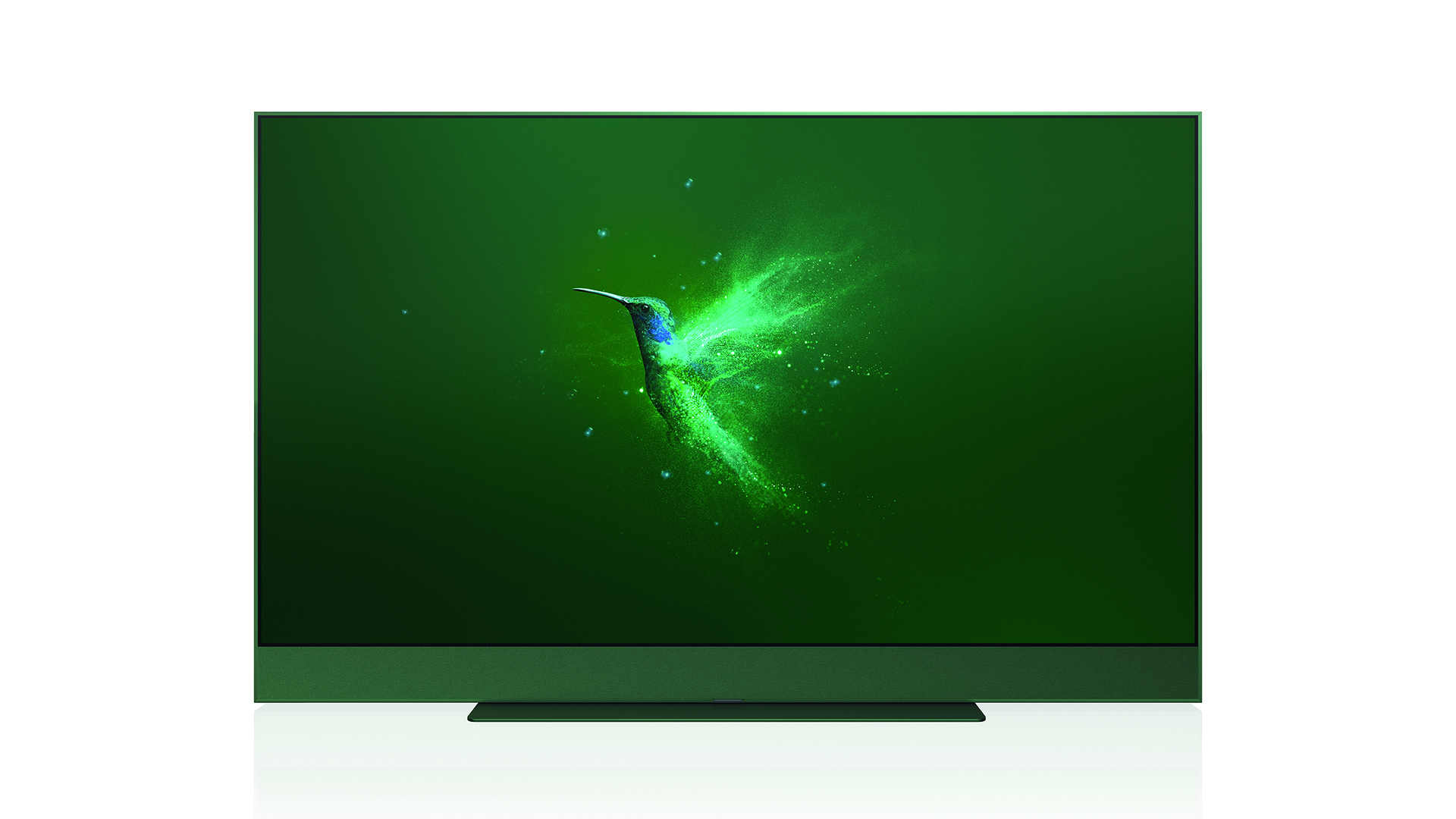
Compared with most TVs, even many costing significantly more, the Sky Glass TV sounds very good. Most TVs under £1000 sound like two wasps having a scrap in a Sprite can, but the sound provided here is more akin to that of a decent budget soundbar.
You will naturally want to make a beeline for some Dolby Atmos content. Do so and you will find that, while the sound doesn't envelop the listening position in the way of a true Atmos speaker system, it has good width and height, filling the portion of the room in which the TV is placed.
There's good depth and weight to bass, too, but without any of the artificial boominess you get from a TV that's simply trying too hard. The Sky Glass woofer is instead fairly articulate and smoothly integrated into the midrange. At the top end, a smidge of extra sparkle would be nice, but there's no brightness or aggression in the treble, and for that we are very grateful.
The biggest concern for most people with regards TV sound is dialogue clarity, and those people will be reassured to hear that Sky Glass is broadly very good here, projecting voices into the room nicely and with natural tonality. Only when there is a lot of action in the soundtrack does the dialogue get lost a little, and even then significantly less so than from an average TV.
The one real issue with the audio from the Sky Glass TV is that it's lacking dynamics. There is a reasonable amount of punch to effects, but there's no significant volume change, either for individual sounds or broader increases in soundtrack intensity, and that means there's a lack of impact and drama.
For a TV, then, Sky Glass sounds very good – but a decent budget soundbar will still beat it, which is perhaps not very surprising when you consider the price you are paying.
Verdict
Ultimately, how much you like Sky Glass will depend on your expectations. If you are expecting a flagship TV's picture performance, and sound to rival a Sonos Beam Gen 2, you are going to be very disappointed. This costs less than half that sort of setup, though, and it performs well given its limitations. Sky should be particularly pleased with the balanced picture performance, which avoids the temptation of trying to dazzle and takes a far more subtle approach that is better suited to its abilities.
That said, the smeary motion is bothersome, and the sound, while generally very good, lacks the dynamic range to be really exciting.
Sky Glass as a platform is very nice, though, particularly in terms of presentation and content aggregation. It's a shame that to get it you have to buy the TV, but at least that won't be the case for much longer. With the Sky Glass Streaming Puck on its way, it might be a more tempting offer to hold out for that and pair it with a better performing TV. As it is, the Sky Glass TV is a solid, but niche proposition for those who value style, neatness and convenience over outright performance.
SCORES
- Picture 4
- Sound 4
- Features 4
MORE:
Read our Sky Q review
Here are the best TVs you can buy right now
Also consider the TCL 55RP620K Roku TV
Tom Parsons has been writing about TV, AV and hi-fi products (not to mention plenty of other 'gadgets' and even cars) for over 15 years. He began his career as What Hi-Fi?'s Staff Writer and is now the TV and AV Editor. In between, he worked as Reviews Editor and then Deputy Editor at Stuff, and over the years has had his work featured in publications such as T3, The Telegraph and Louder. He's also appeared on BBC News, BBC World Service, BBC Radio 4 and Sky Swipe. In his spare time Tom is a runner and gamer.
- Ketan BharadiaTechnical Editor
-
Terry Webb You cannot currently receive the Talking Pictures TV channel on Sky glass although that might change in the future. In the age of Netflix and such like, it may not bother some people but it's an omission worth noting if you do watch it.Reply -
james.halpin Also should mention that the T.V.s lose signal constantly and restting the WiFi hub is needed. I've experienced this myself plus others I know gave reported same issueReply


